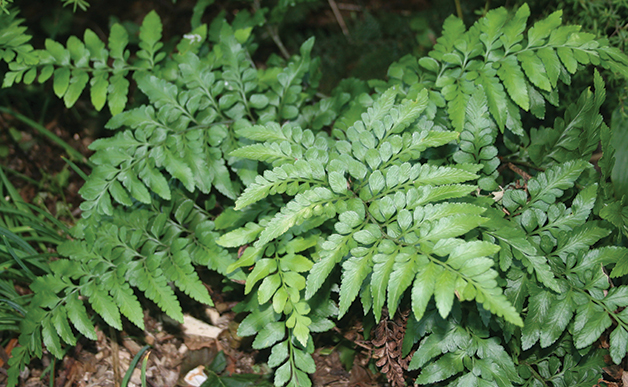He Aitaka a TānePānako
Sept 30, 2016

Plants
nā Rob Tipa

Māori names: Pānako (also parenako, paretao and paretau)
Common names: Shore spleenwort, parsley fern, fine-leaved parsley fern
Botanical names: Asplenium obtusatum, Botrychium australe, Botrychium biforme
Pānako was the name given to three different species of edible ferns, a number of which were known to be part of the Māori diet. The part of the plant generally eaten was the young curled fronds.
Shore spleenwort is a coastal fern with thick, fleshy fronds that thrives on exposed headlands and cliffs throughout New Zealand, and on several sub-Antarctic islands.
In Māori Healing and Herbal, Murdoch Riley writes that pānako is one of several sacred Asplenium species that held great spiritual significance for Māori, featuring in psychic healing and divination ceremonies.
It was used ceremonially by tohunga to diagnose health issues of patients, or to predict the outcome of any tribal enterprises or battles.
In Māori tradition, anyone felling a tōtara tree in the forest to build a waka was expected to cover the tree stump with these ferns, to placate Tāne at the loss of one of his forest children.
Riley records cases where the juice of the bruised roots of these ferns was used as a remedy for running ulcers, and other skin eruptions.
Paretao was the name given to a fern of which the inner fleshy root was scraped and applied directly to a burn. It had a cooling effect as well as healing properties when applied twice a day, his source noted.
A Whanganui woman described the process of using the root of the paretau fern to alleviate teething pain in babies. The root was cut from the plant, washed, and scraped clean, and then rubbed on to the gums of the baby until blood appeared.
“When you see the blood, the baby is cured,” the woman said.
The Ngāi Tahu taonga plants list includes two other references to pānako from the Botrychium genus, commonly known as the parsley fern (Botrychium australe) and fine-leaved parsley fern (Botrychium biforme).
Both are fleshy ferns with red/green to bright green foliage, and are found throughout the North and South Islands in lowland to alpine tussock grasslands, forest clearings, shrublands, river flats, and reverting pastures.
B. australe is an unusually sparse fern in that it only carries one single frond at a time. It is uncommon, and is listed as “at risk” – its survival in some places threatened by predation by pigs. Experts say it is difficult to grow, and should not be removed from the wild.
B. biforme is widely distributed but often sporadic in its occurrence. It is more tolerant of heavily-shaded sites than parsley fern, and is often found in full forests, or under dense thickets of scrub. This fern is difficult to propagate, and like B. australe, should not be removed from the wild.
Considering their taonga status, there are surprisingly few historical references to Ngāi Tahu eating pānako, but with few sources of native vegetable foods available in the south, the parsley ferns in particular certainly look palatable.